What temperature should a fridge freezer be?
The kitchen is the heart of every home, and at its centre sits one of the most essential appliances – your fridge freezer. We all want to keep our food fresh for longer, and we rely on our trusty fridge freezer to take care of that for us.
To keep your food fresh, full of flavour, and safe to enjoy, it’s essential to set the right freezer and fridge temperatures. After all, delicious meals start with ingredients stored in the perfect environment.
Having your food at the ideal fridge or freezer temperature will give you peace of mind. We have created a handy guide to give you a helping hand:
What temperature should a freezer be?
The ideal freezer temperature is -18°C. Storing your food at this correct temperature will keep your produce fresh, delicious, and most importantly, safe.
If the freezer temperature is too warm, then your food will spoil quicker and harmful bacteria may start to grow.
If your fridge freezer temperature is set too low, it can use more energy, impacting both the environment and your energy bills. It can also cause freezer burn, lead to ice crystal build-up, and reduce moisture in your food, affecting both its taste and texture.
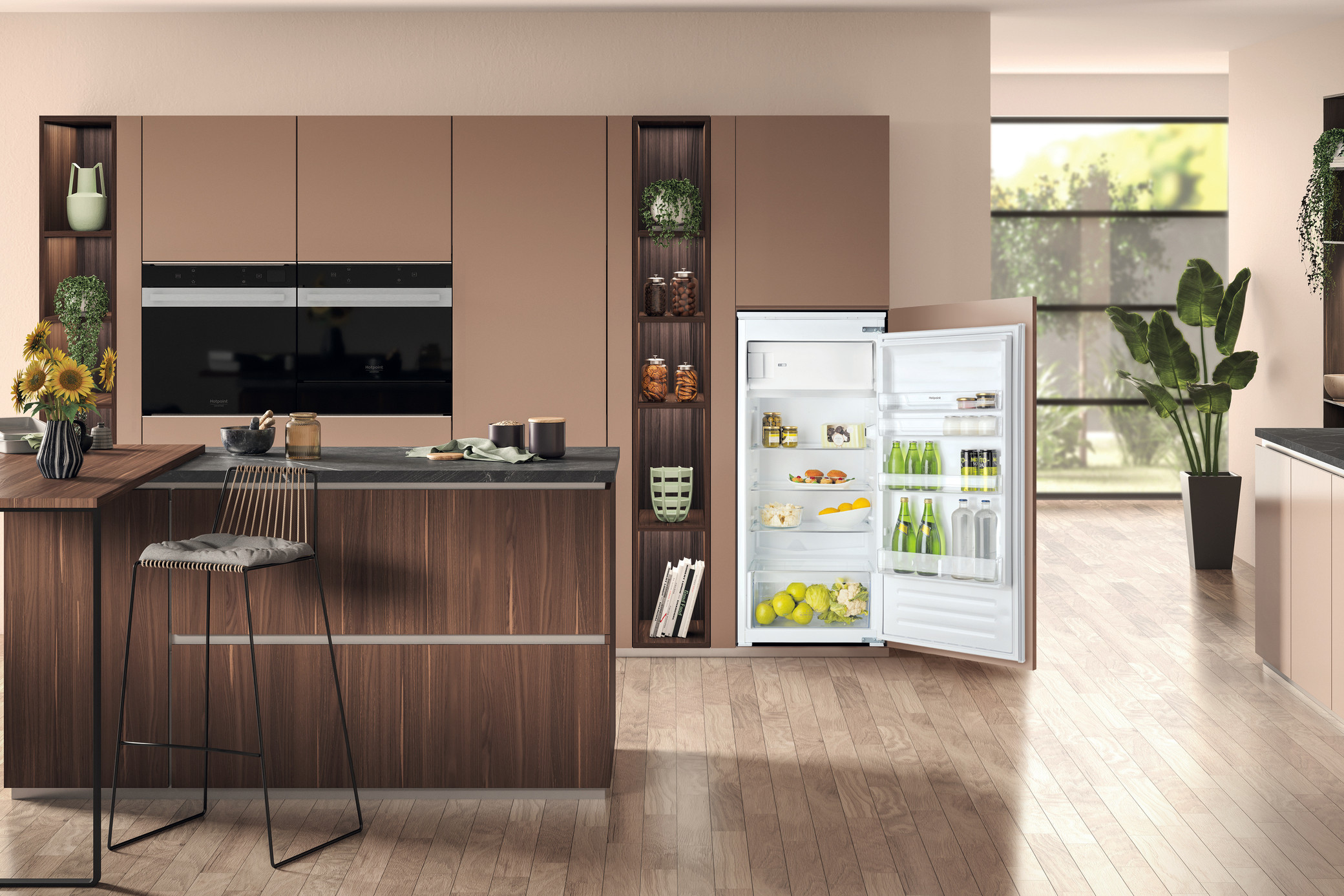
How to store food in the freezer
From batch-cooked meals to quick and easy family favourites, our freezers can take care of your food for long periods of time when used at the correct temperature.
Correct freezer storage will help your food maintain freshness flavour as well as keeping them safe and free from freezer burn.
keep these points in mind when putting food into your freezer:
- Food should be frozen by the use-by date and within two hours of cooking or opening.
- Defrosted food should never be refrozen, as bacteria that was halted when frozen will have already started to regrow once they have thawed.
- Make sure food is properly sealed, this is so it doesn’t get freezer burn.
- Regularly defrost your freezer. Alternatively, choose one of our freezers with Total No Frost technology, which prevents the formation of ice and removes the need to ever have to defrost it again.
As the creators of the very first frost-free fridge freezer, we’re proud to have led the way in advancing fridge freezer technology.
Now that you know what the ideal freezer temperature is, let's move onto the fridge.
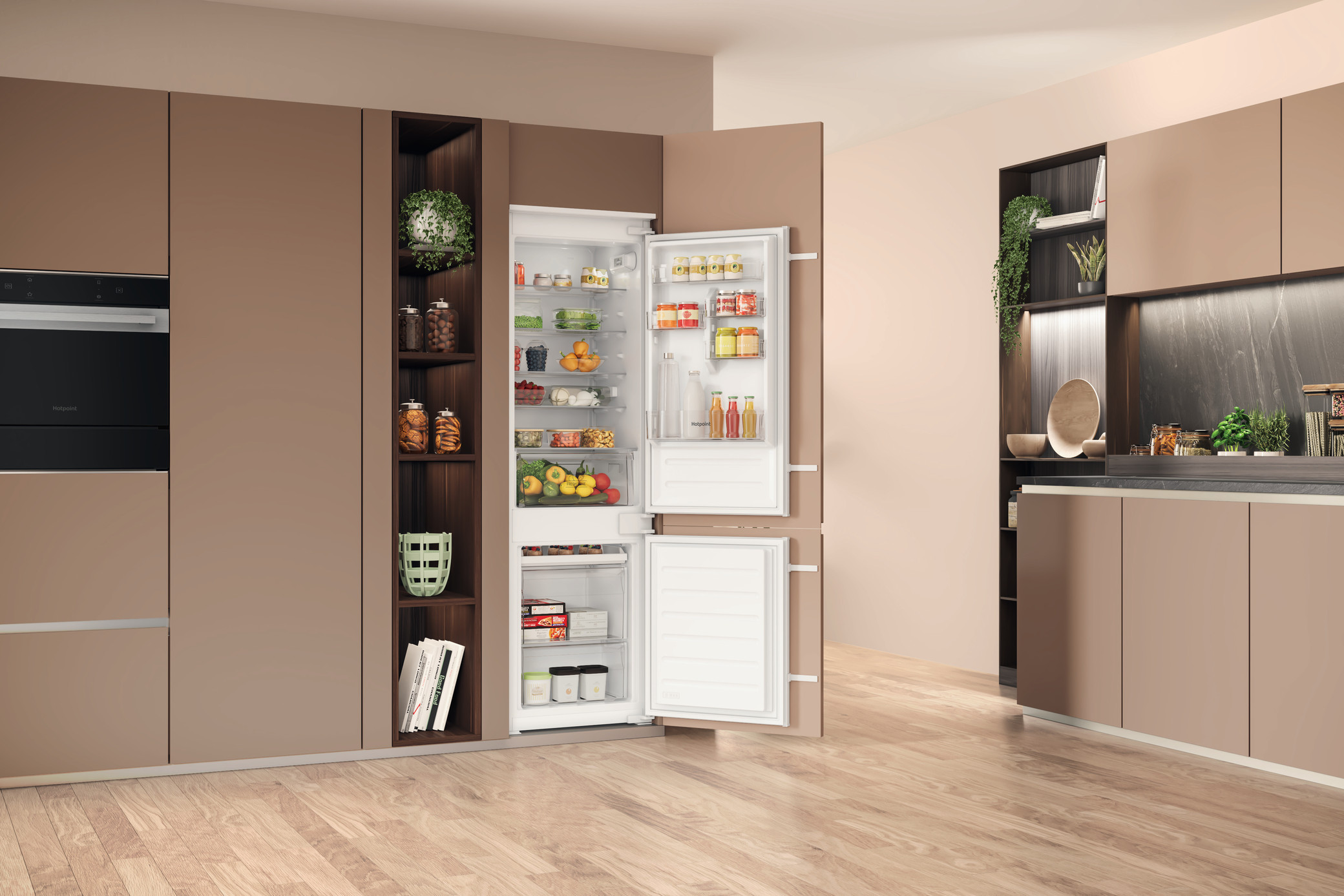
What should a fridge temperature be?
The ideal fridge temperature is between 3 - 5 and the best way to keep an eye on your fridge temperature is with a non-mercury thermometer in the middle of the fridge.
As well as keeping your fruits and veggies crisp and your leftovers safe, preserving the ideal fridge temperature is key to keeping your appliance smelling fresh and reducing food waste.
If your fridge is too warm, your food will start to go off, smell bad, or even produce mould. This can happen if the fridge temperature control is not cold enough, if the door is left open accidentally, or if there is an issue with a broken seal or clogged vent.
However, if the fridge is too cold, it uses more energy, and your food can begin to freeze.
To keep your food fresh and your energy bills down, regularly check that your fridge or fridge freezer is running at the recommended temperature. Also help cool air to properly circulate around the fridge by not overfilling the appliance or allowing the air vents to be blocked.
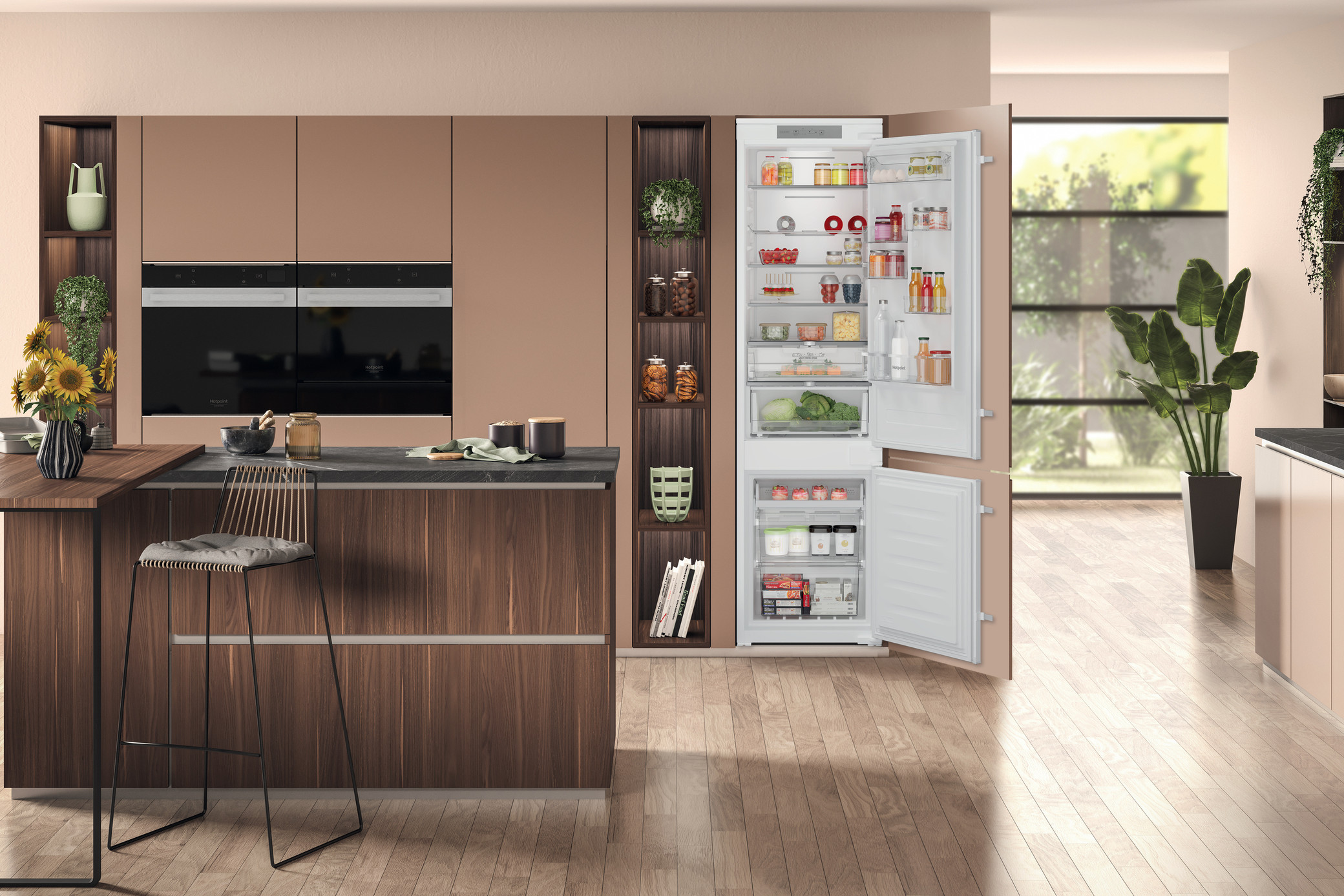
Fridge temperature settings
Knowing what number your fridge should be on will help you ensure the appliance is set to its ideal temperature.
The fridge temperature control does not indicate a specific temperature in degrees but indicates the cooling power level.
Fridge temperature settings are generally numbered from 1 to 5, with 5 being the coldest. A fully stocked fridge may need to be set to a higher setting (around 3 or 4), while a fridge with more empty space is best set between 2 and 3.
Hotpoint fridges and fridge freezers handily also include a built-in thermostat, allowing you to adjust the temperature precisely and monitor your appliance’s cooling performance.
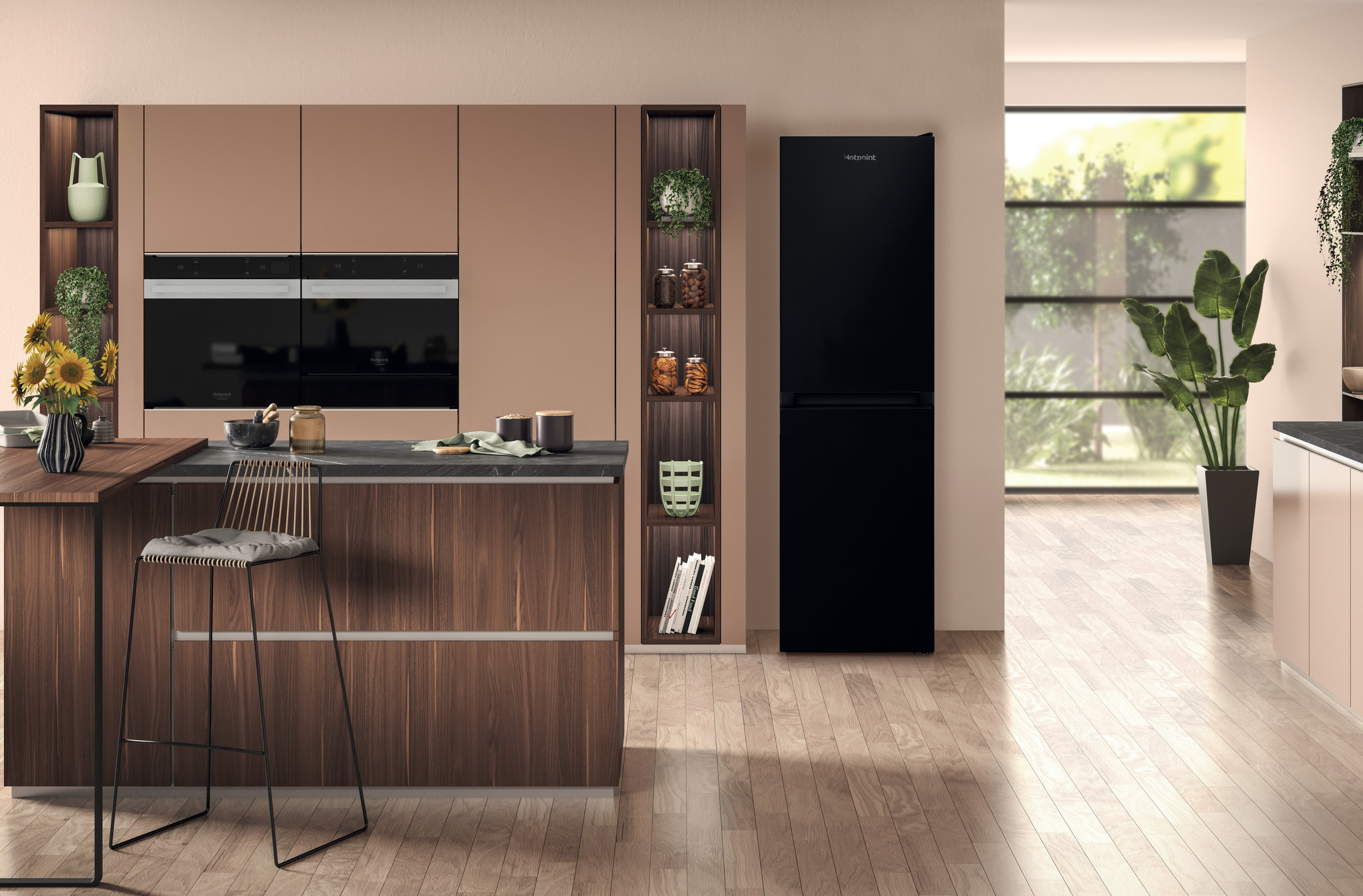
How to store food in the fridge
It is also important that food is stored in a certain way to ensure your fridge is running efficiently and that the appliance’s cooling technology can do its job. Not only will this ensure that your fridge or fridge freezer stays at the correct temperature to preserve your food, but it will help to reduce food waste too.
Different areas of the fridge have different temperatures, generally, the lower shelves are cooler, while the upper areas are slightly warmer, as heat rises. Therefore, organising food with this in mind helps keep food fresh for longer:
- Bottom shelves: This is the coolest part of the fridge, ideal for storing meat and fish. Keep them tightly wrapped or covered to prevent any risk of cross-contamination.
- Middle and top shelves: Cheese, milk, and similar dairy products should be stored towards the middle and top shelves of the fridge.
- Door compartments: The door is the warmest part of the fridge since it’s opened frequently and exposed to room temperature. Instead of storing dairy here, which can spoil quickly, use this space for less perishable items like condiments and sauces.
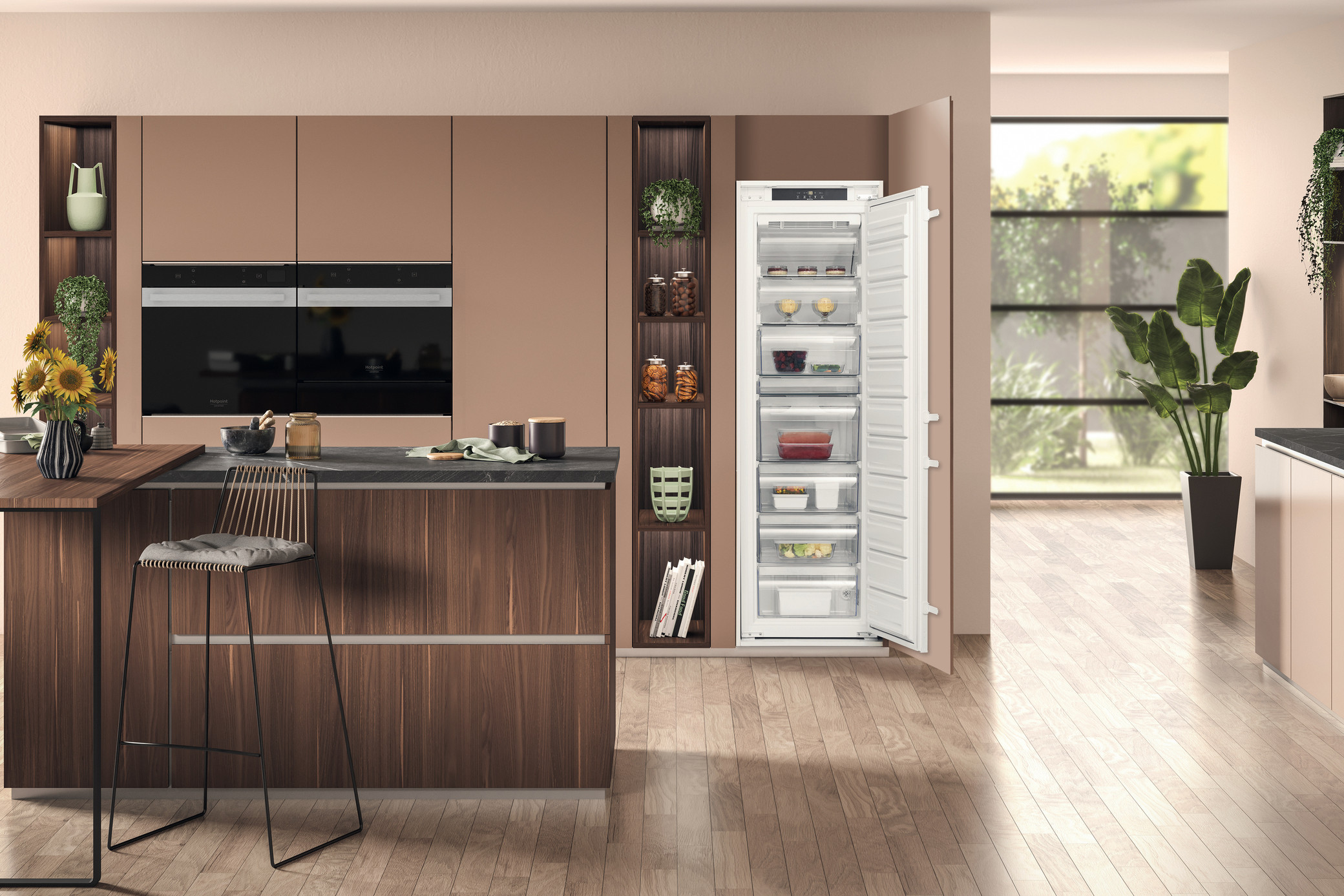
How Hotpoint Fridge Freezers Keep Every Compartment at the Perfect Temperature
For over 110 years, Hotpoint has been creating appliances and thoughtful home solutions for your family.
Our fridge freezers are packed with clever technology that ensures your food stays fresh for longer, helping you to prevent food waste.
Standout features include:
- The Fast Fast Freeze function allows you to quickly freeze your food, so when you return home with groceries and place them into your freezer, the function will rapidly drop the temperature of the appliance to help maintain the freshness of your food.
- Even Flow technology distributes consistent and cool air across every shelf of a fridge freezer to keep your fruit and vegetables fresh and crisp for up to 30% longer.2.
- The Fresh Zone is a dedicated drawer that maintains the correct temperature for crisp salads and long lasting vegetables.
- Fresh Zone+ drawers keeps your fruit and vegetables fresh for up to 2 weeks, maintaining the right temperature with the handy humidity control3.
Discover thoughtful tech inside every Hotpoint appliance. Explore our full range of fridge freezers online and find the perfect match for your home. Whether you’re looking for an integrated design or a freestanding model, you’ll enjoy technology that keeps your food fresh for longer.
1Virucidal field tests done by Notovir srl following the Guidance on the BPR, Vol. II Parts B+C, v. 3.0 Apr 2018 and including also Human Coronavirus OC43 for 24 hours at 4°C. Results referred to Murine Norovirus and Human Coronavirus OC43 and may vary based on shelf positioning and presence/absence of packaging. Tests on bacteria done by an independent laboratory on Petri plates in the 24 hours, according to ISO 22196, bacteria tested E.Coli and St. Aureus.
2Weight loss and sensory evaluation tests used for the determination of shelf life were conducted internally by Beko Corporate on carrot, fresh-cut iceberg lettuce, fresh-cut tomato, strawberry, salami, and kashar cheese samples stored in the EvenFlow refrigerator and control refrigerator (without the EvenFlow technology) for a 12-day period. Actual results may vary based on food type and usage conditions.
3Based on weight loss and visual quality, considering common fruits and vegetables. Internal test procedure.





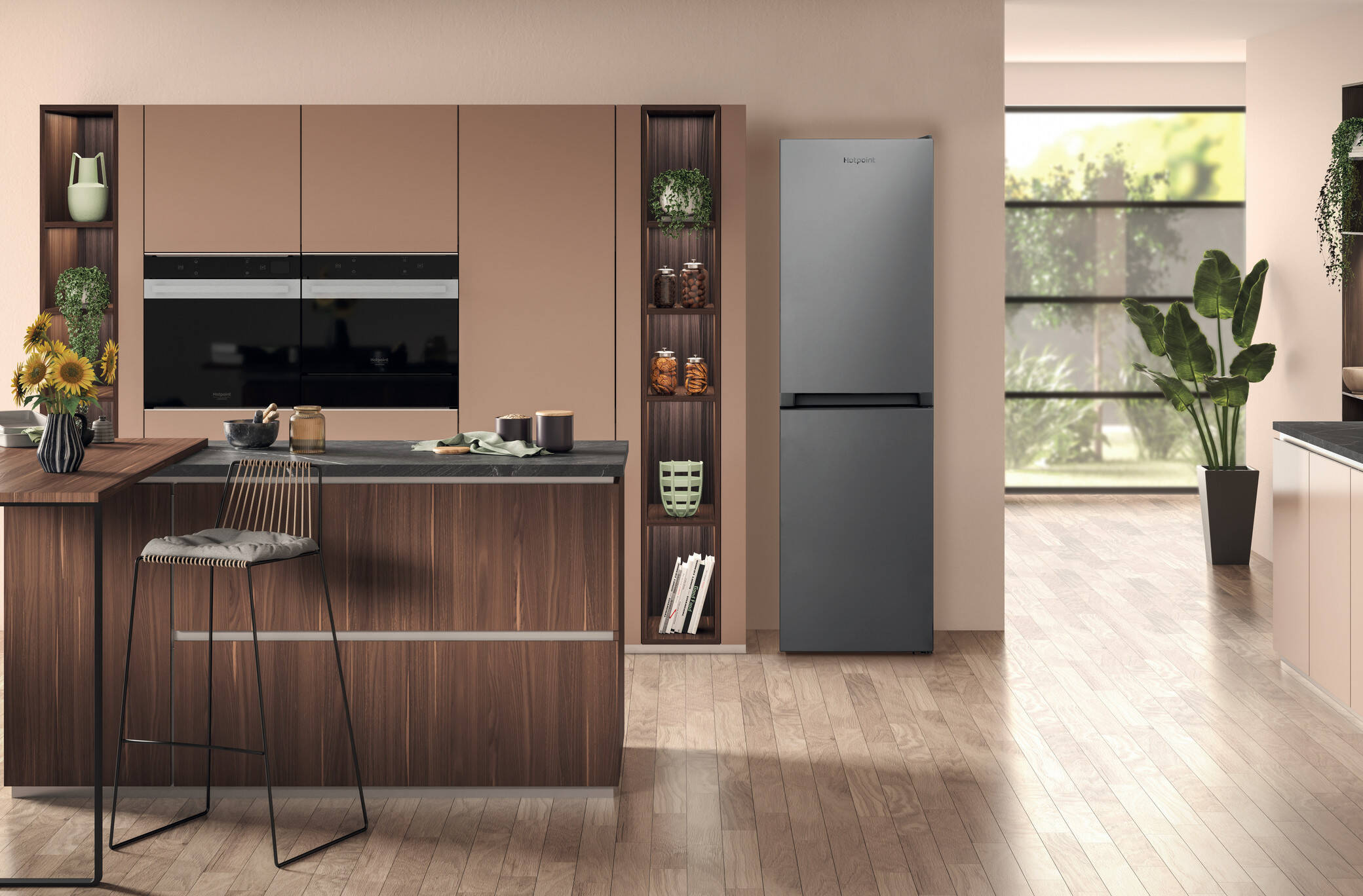
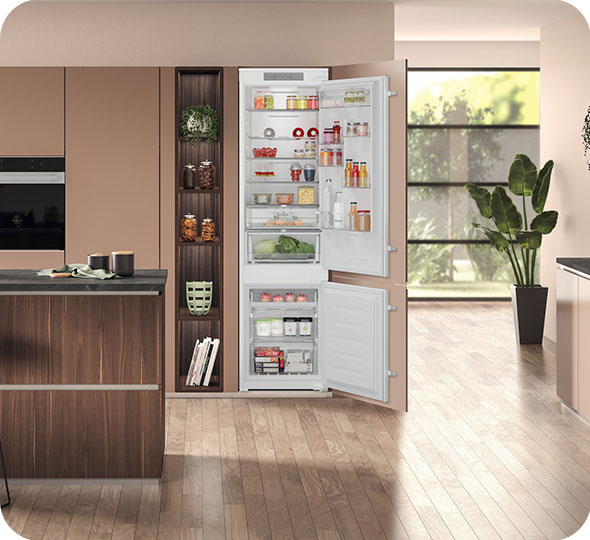










.png)


